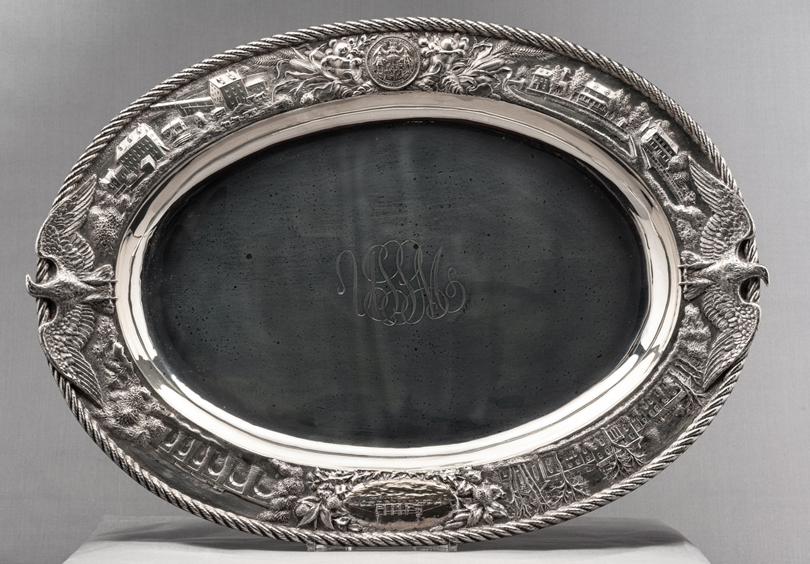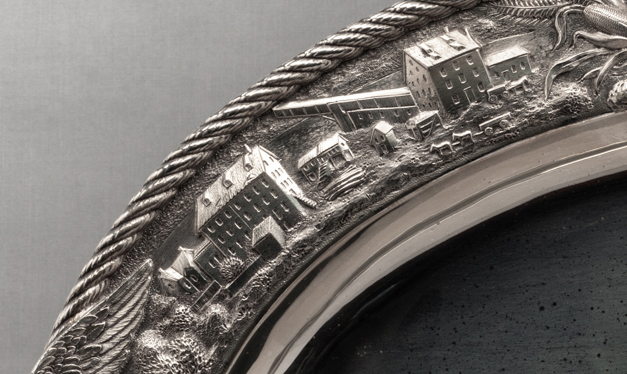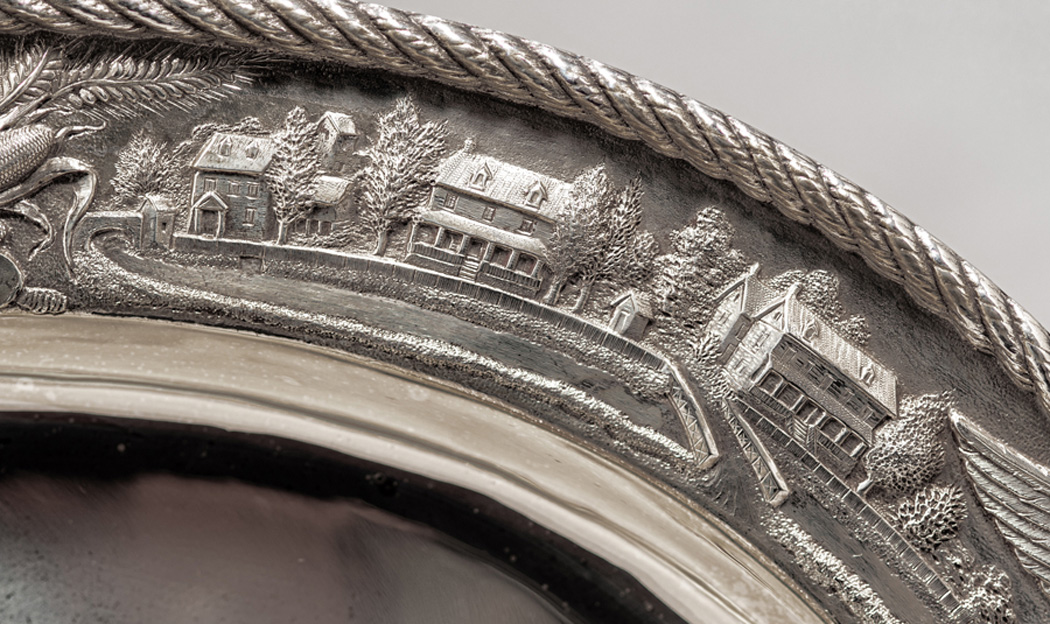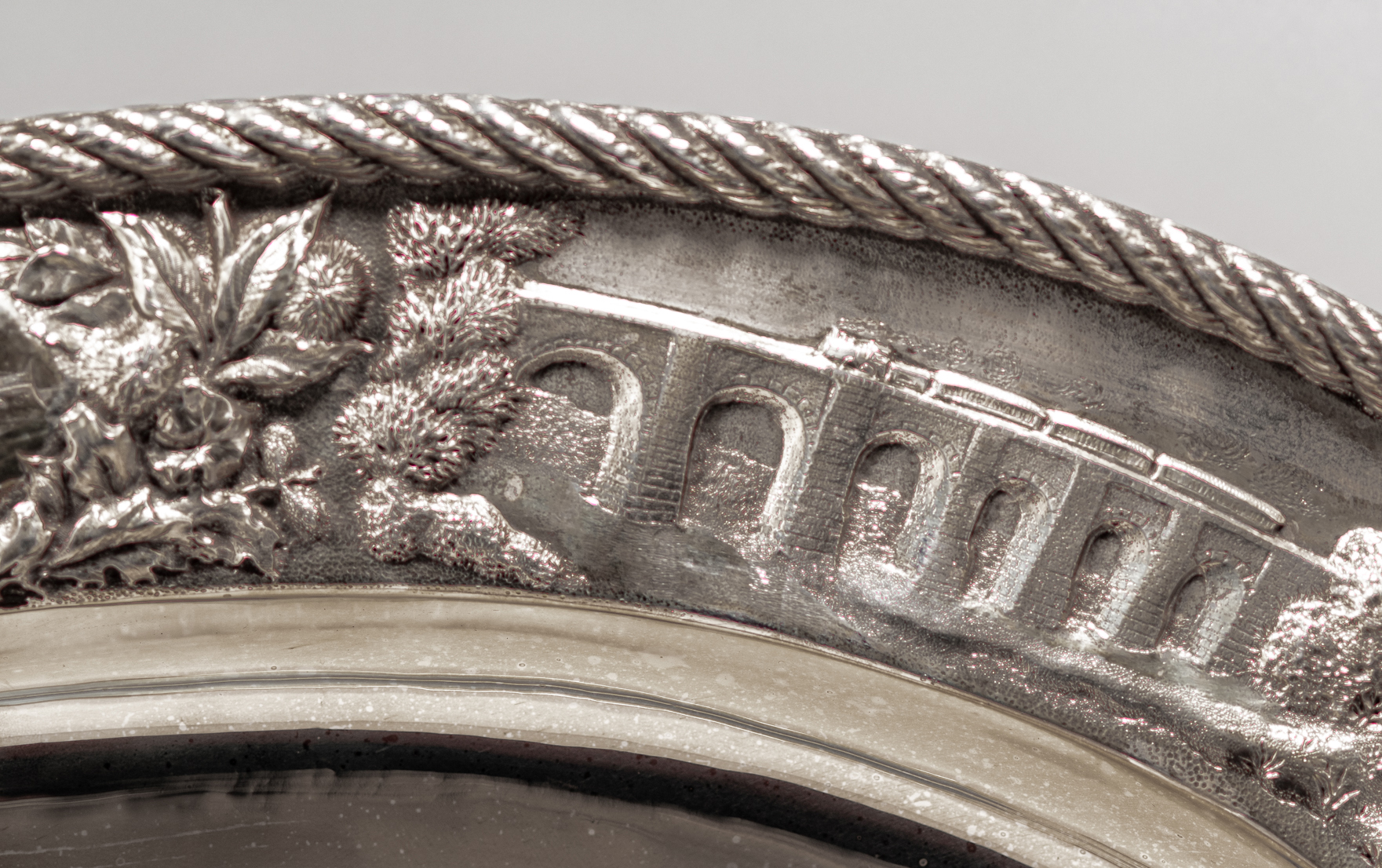Roast Platter, Howard County
From the USS Maryland Silver Service

Maker: Samuel Kirk & Sons (1815-1979)
Object: Roast Platter, Howard County
Date: 1906
Medium: Sterling Silver
Dimensions: Overall width, 23 1/8"; Overall height, 16 1/2"
Accession number(s): MSA SC 1545-0933
Howard County is represented by this large roast platter. Howard District was created from Anne Arundel County in 1838, and it was officially formed as a county in 1851. The county was named for John Eager Howard, a Revolutionary War officer, Maryland governor, and statesman.
The Great Seal and the cruiser are surrounded by clusters of wheat, leaves, flowers, and fruits. The scenes on this piece were selected to represent the early history of the county.
Scenes across the top (left to right):
1. Ellicott’s Mills (number 59)The scene on the roast platter is reproduced from an 1854 print by E. Sachse & Co., Baltimore.

2. Great Seal of Maryland
3. Homes of John, Jonathan and George Ellicott (number 60)

Scenes across the bottom (right to left):
1. The Thomas Viaduct (number 62)
The Thomas Viaduct can be easily seen along trails in Patapsco Valley State Park. It is still traversed by railroad trains today.

2. USS Maryland Cruiser
3. Doughoregan Manor (number 61)
Much of the Carroll’s wealth was accumulated by enslaved labor on their land. Charles Carroll of Carrollton, the only Catholic signer of the Declaration of Independence, who lived in the Manor from 1766 to 1832, held over 300 people in bongage.

|
This web site is presented for reference purposes under the doctrine of fair use. When this material is used, in whole or in part, proper citation and credit must be attributed to the Maryland State Archives. PLEASE NOTE: The site may contain material from other sources which may be under copyright. Rights assessment, and full originating source citation, is the responsibility of the user. |
© Copyright August 07, 2024 Maryland State Archives
